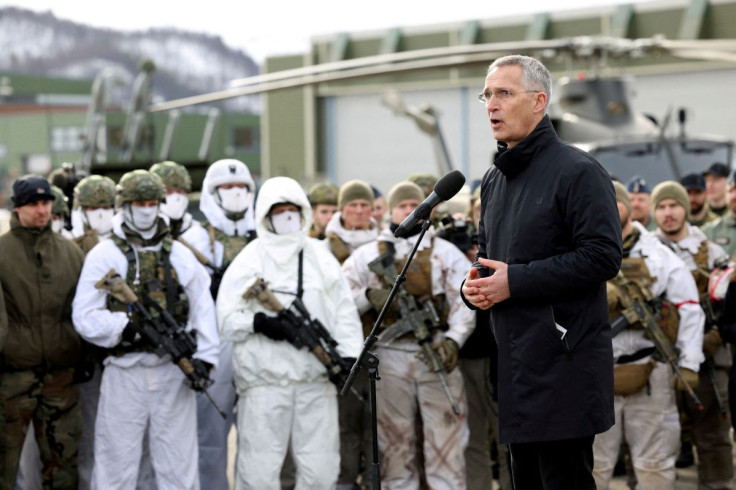NATO Vastly Expands Troops At High Readiness For Long-term Russian Threat

NATO agreed on Wednesday to put over 300,000 troops at high readiness from 2023, up from 40,000 previously, a new military line-up designed to better counter Russia, the country the alliance has designated as posing the greatest threat.
The move replaces the NATO Response Force, which was for years the first to respond to any Russian attack or other crisis. The new model resembles the way NATO forces were organised during the Cold War.
At that time, specific allied countries were assigned the defence of specific sectors of the border between Western and Eastern Germany.
"Today, NATO leaders decided a fundamental shift in our defence and deterrence to respond to a new security reality," NATO Secretary-General Jens Stoltenberg told reporters.
"We will enhance our battlegroups in the eastern part of the alliance up to brigade level. We will transform the NATO Response Force and increase the number of high readiness forces to well over 300,000," he added.
A brigade has some 3,000 to 5,000 troops, while a battalion - the unit that made up a battlegroup in the past - normally has between 300 to 1,000 troops.
At the same time, NATO will designate forces for the defence of specific regions along its eastern flank and stockpile more military equipment there to speed up the deployment of any reinforcements that may be needed.
"This is the first time since the Cold War that we have these kind of plans with pre-assigned forces," Stoltenberg said.
"They will work with home defence forces, and become familiar with local terrain, facilities, and pre-positioned stocks so that we can reinforce even faster," he said.
After Russia's invasion of Ukraine on Feb. 24, NATO allies ramped up their troops in the Baltic states, seen as particularly vulnerable to a Russian attack, strongly expanding the multinational battalions based there.
Germany has already pushed ahead with these plans, pledging one designated brigade for the defence of Lithuania and one division overall - some 15,000 troops - for the high-readiness forces, as well as some 65 planes and 20 ships.
While part of the brigade will remain on stand-by in Germany and only occasionally rotate into the country, the unit will have a permanent headquarters manned with staff in Lithuania.
Britain has similar plans for the defence of Estonia.
But for NATO, the new force model is not just a return to its Cold War posture. With NATO's eastern enlargement, the border to protect has expanded significantly and now reaches from the Baltic to the Black Sea.
NATO did not have to worry about drones, cyber attacks or hypersonic weapons during the Cold War. "The way we use and employ forces is not going to be the same as we had in the Cold War, especially we've recognised additional domains," a U.S. official said.
"We now have five domains of operation - people talk about land, air and sea, but we've also got cyber, we've got space. And those are important too."
© Copyright Thomson Reuters 2024. All rights reserved.







